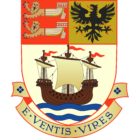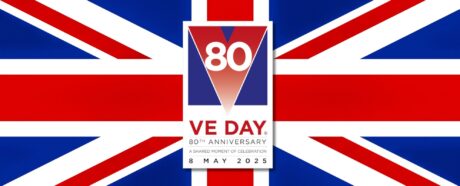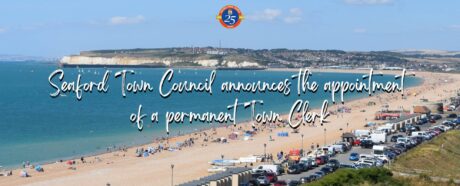*UPDATE* - The recent work (detailed in the article below) by Archaeology South East and Historic England to investigate the Iron Age Fort has been picked up by both The Telegraph, and BBC South East Today:
The Telegraph article can be read here -
http://digitaleditions.telegraph.co.uk/data/843/reader/reader.html?social#!preferred/0/package/843/pub/843/page/31/article/259830
BBC South East Today included this piece in its 18th January broadcast and can be viewed via the following link, the piece starts at 21 minutes 40 seconds https://www.bbc.co.uk/iplayer/episode/m0013nxq/south-east-today-evening-news-18012022
Seaford Head, a nationally important heritage site at increasing risk of coastal erosion related to accelerating climate change, is being investigated and recorded under a new initiative involving Archaeology South-East, part of UCL’s Institute of Archaeology.
Improved understanding is a necessary first step in the process of managing the loss of an archaeological site, and the Seaford Head Project is trialling ways of achieving this including 3D modelling and surveying the site with drones. The project will also trial the use of podcasts and videos to engage local communities in a conversation about coastal change and how they feel about the eventual, inevitable loss of historic sites.
The team and their partners have begun capturing the nationally important archaeology of Seaford Head, East Sussex, before it is lost to coastal erosion. The headland, which includes an Iron Age hillfort and provides the iconic view of the Seven Sisters cliffs, has seen significant cliff collapses in the last year. The erosion is expected to increase in frequency and severity with predicted rises in rainfall and storm events related to climate change.
Jon Sygrave, project manager for Archaeology South-East, said: “Seaford Head is a striking and beautiful site featuring archaeology of multiple periods, including a Bronze Age bowl barrow (a type of burial mound), an Iron Age hillfort and a Second World War reinforced concrete structure.
“Using a combination of non-intrusive archaeological techniques, we are assessing and recording the threatened heritage on Seaford Head. This includes desk-based analysis of historic maps, and aerial, topographic and geophysical survey, and could result in the discovery of previously unknown heritage assets.
“A crucial part of this is using a drone to capture archaeological features exposed in the cliff and accurately map the site’s earthworks to create a 3D model of Seaford Head, preserving its complex heritage for future generations.”
The investigations at Seaford Head will be used to provide a case study and template for other heritage agencies, landowners, and community groups facing similar threats to their local heritage to help plan and deliver local responses.
The project is funded by £18,975 from Historic England with contributions from the South Downs National Park Authority (SDNPA). It draws together the expertise of UCL archaeologists from Archaeology South-East, artists and videographers along with several key stakeholders, principally Seaford Town Council, the SDNPA and Historic England.
Marcus Jecock, Senior Archaeological Investigator and Coastal Lead at Historic England, said: “Coastal erosion is not a new threat, but climate change is accelerating the rate at which erosion is happening and thereby the rate at which archaeological sites of all types that exist around our coasts are being lost - often without proper record.
“The hillfort on Seaford Head is a scheduled monument, meaning the archaeology here is recognised as nationally important. We, as a nation, cannot build sea defences to protect every stretch of coastline against erosion, so earlier this year Historic England added the site to the Heritage at Risk Register in recognition of the threat it faces.
“At the same time, we have commissioned Archaeology South-East to map the visible, above-ground remains in detail and to conduct a geophysical survey to give us a picture of buried features within the interior. Funding this work will help us make informed decisions on the long-term management and recording of the monument, before it falls completely in to the sea.”
Adam Chugg, Town Clerk of Seaford Town Council, said: “As well as its archaeological significance, Seaford Head is an important area of Chalk Downland landscape, which includes a nature reserve managed by the Sussex Wildlife Trust, and a golf course run by Seaford Town Council.
“As owners and custodians of the site, we look forward to learning more about the fort before the remaining parts of it are lost to coastal erosion.”
An important part of the project is to engage the community with the findings and include the public in conversations about heritage loss between experts and policy makers.
Anooshka Rawden, Cultural Heritage Lead at the South Downs National Park Authority, said: “This project is not only both exciting and timely given we know very little about this site, but it will also give us an opportunity to open up the conversation about heritage loss linked to landscape change.
“The project will produce films and podcasts to open up discussions about heritage loss, and help us understand how the public feel about change and loss of this kind, particularly where we have perhaps become disconnected with the heritage in our landscape. We have the chance to rediscover lost stories that reveal the deep time of the South Downs.”
Artist and writer Alinah Azadeh will be working with the Seaford Head Project team to create a short spoken-word performance on film reflecting both the archaeological findings and the wider issue of landscape change and heritage loss. Working with an artist gives the project an opportunity to broach loss more broadly, touching more emotively on our relationships with place and time.
The Seaford Head Project is running over the autumn and winter. To keep up to date, please visit the project website at https://www.ucl.ac.uk/archaeology-south-east/seaford-head or follow #SeafordHeadProject on Twitter, Facebook and Instagram.

Notes to Editors
For more information or to speak to the team involved, please contact Dr Rebecca Caygill, UCL Media Relations. T: +44 (0)20 3108 3846 / +44 (0)7733 307 596, E: [email protected]
Additional material
Images are available to download from https://we.tl/t-cxUPp9h3DY. These pictures are only to be used in conjunction with the Seaford Head project press release. The image must not be retained in the newspaper's image library. Please use the below descriptions and credits:
Image 1: Aerial view of Seaford Head, East Sussex, showing the earthworks of the hillfort around the golf course. © Historic England Archive
Image 2: Dr Vas Tsamis undertaking topographical survey. © Chip Creative
Image 3: Dr Ed Blinkhorn setting up resistivity survey. © Chip Creative
About UCL – London’s Global University
UCL is a diverse global community of world-class academics, students, industry links, external partners, and alumni. Our powerful collective of individuals and institutions work together to explore new possibilities.
Since 1826, we have championed independent thought by attracting and nurturing the world's best minds. Our community of more than 43,800 students from 150 countries and over 14,300 staff pursues academic excellence, breaks boundaries and makes a positive impact on real world problems.
We are consistently ranked among the top 10 universities in the world and are one of only a handful of institutions rated as having the strongest academic reputation and the broadest research impact.
We have a progressive and integrated approach to our teaching and research – championing innovation, creativity and cross-disciplinary working. We teach our students how to think, not what to think, and see them as partners, collaborators and contributors.
For almost 200 years, we are proud to have opened higher education to students from a wide range of backgrounds and to change the way we create and share knowledge.
We were the first in England to welcome women to university education and that courageous attitude and disruptive spirit is still alive today. We are UCL.
www.ucl.ac.uk | Follow @uclnews on Twitter | Read news at www.ucl.ac.uk/news/ | Listen to UCL podcasts on SoundCloud | Find out what’s on at UCL Minds
About Archaeology South-East
Archaeology South-East is the contracts division of the UCL Institute for Archaeology. We are a large team of professional archaeologists with three regional offices based in Sussex, Essex and London. Our team comprises field archaeologists, artefact and environmental specialists, surveyors and illustrators. We also have a historic buildings department and a team who carry out desk-based research of historical sources. We work with local communities and business clients to carry out investigations on projects such as road schemes, new business developments, pipelines, quarries and housing developments.
More information: www.ucl.ac.uk/archaeology-south-east
About Historic England
We are Historic England, the public body that helps people care for, enjoy and celebrate England’s spectacular historic environment, from beaches and battlefields to parks and pie shops. We protect, champion and save the places that define who we are and where we’ve come from as a nation. We care passionately about the stories these places tell, the ideas they represent and the people who live, work and play among them. Working with communities and specialists we share our passion, knowledge and skills to inspire interest, care and conservation, so everyone can keep enjoying and looking after the history that surrounds us all. We fundraise from individuals, charitable trusts and foundations and public sector bodies to enable us to deliver those aspects of our work that are not funded by our Government grant.
Historic England gives grants for the repair and conservation of listed buildings, scheduled monuments and registered parks and gardens. This includes project development actions which enable repair or improved future management. Our Heritage at Risk programme protects and manages the historic environment. The public body works with owners, friends groups, developers and other stakeholders to find solutions for ‘at risk’ historic places and sites across England.
About Seaford Town Council
Seaford Town Council is the tier of local government that truly represents the needs and voice of the town of Seaford specifically. The Town Council is custodian to many unique and wonderful sites and assets across the town. The Town Council exists to ensure continued management of its portfolio of assets for the enjoyment of residents and visitors, work with a huge variety of partners for the betterment of the town and ensure that Seaford has the voice it needs in matters affecting the town. The Town Council is a corporate body consisting of 20 elected councillors, who do so on a voluntary basis, and a dedicated team of officers based centrally in the town.
More information can be found at: https://www.seafordtowncouncil.gov.uk/
About the South Downs National Park Authority
The South Downs National Park is the third largest National Park in England and has the largest National Park population, with 117,000 residents. From rolling hills to bustling market towns, the South Downs National Park’s landscapes cover 1,600km2 of breathtaking views, including 18 distinctive landscapes, 13 European wildlife sites and more woodland than any other National Park in England or Wales.
Alinah Azadeh is a writer, artist, performer and cultural activist of British Iranian heritage, with 25 years of experience in the arts - focused on intersecting issues of migration, identity, heritage, loss and change. As well as artist commissions and programme design for major museums, galleries and across diverse communities in the UK, she has had short stories, poetry and academic journal articles published. Alinah is inaugural writer-in-residence at the Seven Sisters Country Park & Sussex Heritage Coast, commissioned by the South Downs National Park Authority, with a diverse literature and landscape writing project, We See You Now, also supported by Arts Council England. She recently became a writer/presenter for broadcast, with her residency podcast The Colour of Chalk, and has further work coming out on radio this winter. Her debut novel, In the Skin of a Stranger was longlisted for the S. I. Leeds Prize 2020, and has just been completed through a Chapter and Verse Sable/Lit TLC scholarship.






